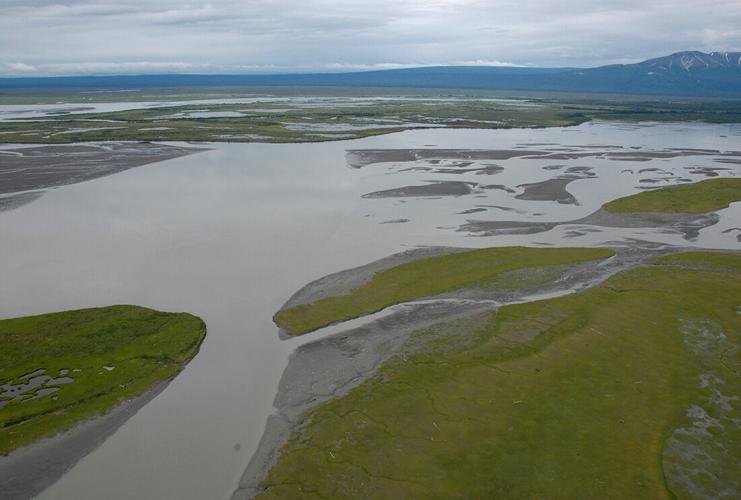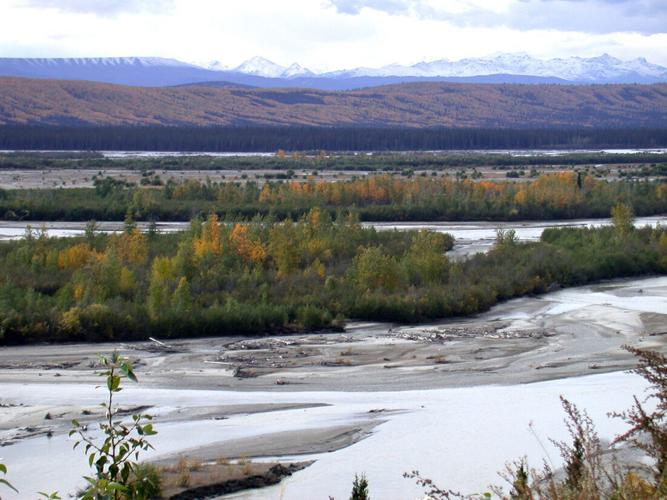Southcentral Alaska’s Susitna River is one of the nation’s most endangered rivers because of a state plan to build a 100-mile road into its uplands to encourage mining, oil and gas drilling, logging and other extraction development, according to a report released Wednesday.
The Susitna ranked eighth on a list of 10 threatened waterways cited in the annual report issued by the conservation group American Rivers.
The 10 sites in the report, titled America’s Most Endangered Rivers of 2025, were chosen according to their ecological and community importance, the magnitude of the threats from pollution, development or other factors and the opportunities for the public to sway pending policy decisions.
For the Susitna, the threat comes from the West Susitna Access Project, according to the report. The project, being pursued by the Alaska Department of Transportation and Public Facilities and the Alaska Industrial Development and Export Authority, proposes a road linking the Parks Highway north of Anchorage to the roadless upstream area of the Skwentna River, a Susitna River tributary that runs along the base of the Tordrillo Mountains.
The road would cross 180 streams, degrading hunting, fishing and wildlife habitat, and the mining, drilling and other resource extraction enabled by the road would contaminate the river’s water and the air above it, the report said. That, in turn, would threaten fishing-related businesses and harvesters, local tourism and communities, including Alaska Native communities dependent on the river’s resources for subsistence food-gathering, the report said.
The report urges the public to join the campaign against the road project by submitting comments during the ongoing environmental review process to oppose any U.S. Army Corps of Engineers permit approval. The report also urges the public to campaign against any federal funding of the project.
Organizations that advised American Rivers on the Susitna River’s status included the Susitna River Coalition, Cook Inletkeeper and the Chickaloon Village Traditional Council, a Tribal government.
“The West Susitna Industrial Access Road will bring sweeping changes to our region—transforming fish and wildlife habitat, altering subsistence resources, decimating sustainable economies, and reshaping the outdoor experiences that Alaskans and visitors from around the world cherish,” Margaret Stern, program and communications director for the Susitna River Coalition, said in a statement released by American Rivers. “This boondoggle project would open the door to large-scale industrial development in one of the world’s last truly wild places. We must ensure that local communities, hunters, anglers, and all advocates for wild spaces make their voices heard in ensuring the future of this unique region.”
Officials from the Department of Transportation and Public Facilities and AIDEA did not immediately respond to questions about the American Rivers report.
The West Susitna Access Project stretches back more than a decade.
Supporters say it would unlock economic opportunities for the state. That argument is made in a short video posted on AIDEA’s website.
“Millions of acres of state lands lie west of the Susitna River, providing new opportunities to Alaskans for outdoor recreation, jobs and economic growth. These lands hold critical minerals and other stranded resources that are vital for Alaska’s economic future,” the video’s narrator says.
The project was originally proposed in 2013 as part of then-Gov. Sean Parnell’s Roads to Resources program, which envisioned numerous new roads that would enable resource extraction in remote areas of the state.
In 2023, the project was split in two, with the Alaska Department of Transportation and Public Facilities in charge of the envisioned first 22 miles and AIDEA leading development plans for the remaining miles.
The state transportation department, which would use a combination of state and federal funding for the project, has launched an environmental review process needed to obtain a wetlands-development permit from the U.S. Army Corps of Engineers.
However, Gov. Mike Dunleavy’s request for $2.5 million to help move the project along was omitted from the state capital budget that the Alaska Senate passed unanimously on Tuesday.
Other Alaska rivers have made the annual list in past years, including the Kobuk River, which was in the 2024 report because of the proposed Ambler Access Project, which proposes an industrial road of about 200 miles into the Brooks Range foothills.
Other U.S. rivers listed in this year’s report as being among the 10 most endangered are in different parts of the Lower 48 states.
The Mississippi River, which passes through several states, topped the endangered list. American Rivers based that status on increased flooding and what it categorized as inadequate flood prevention and response.
Alaska Beacon is part of States Newsroom, a nonprofit news network supported by grants and a coalition of donors as a 501c(3) public charity. Alaska Beacon maintains editorial independence. Contact Editor Andrew Kitchenman for questions: info@alaskabeacon.com.


